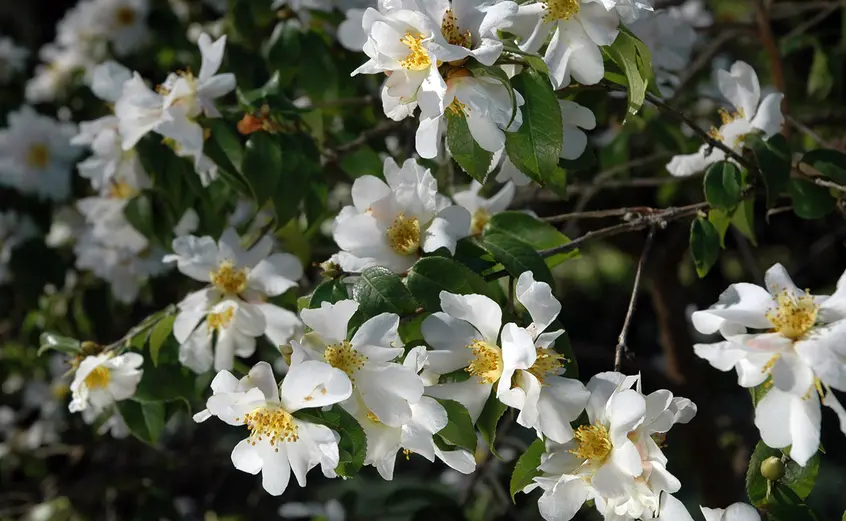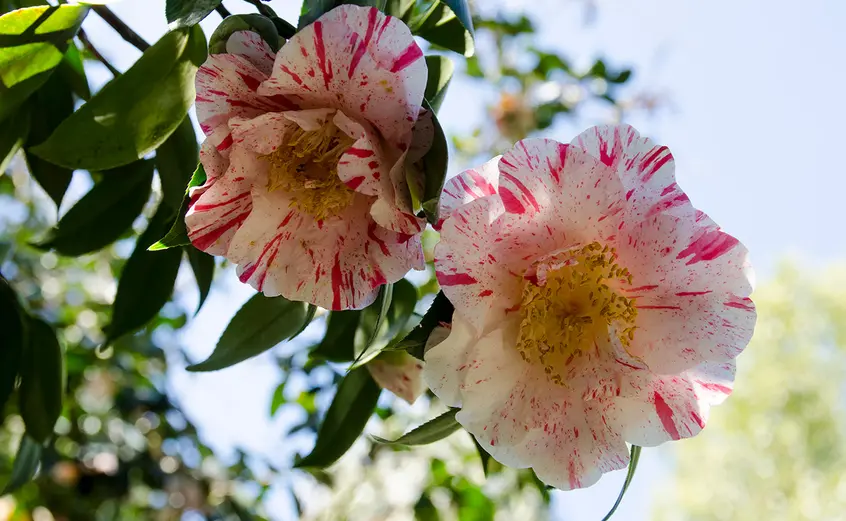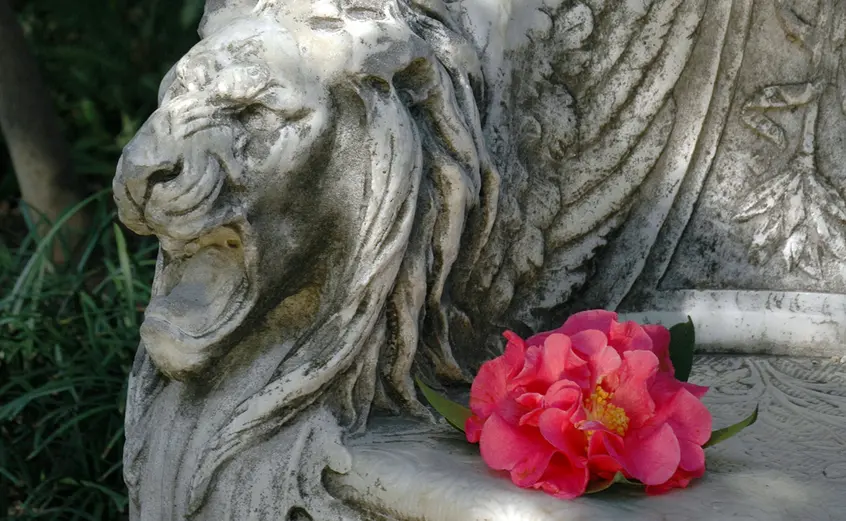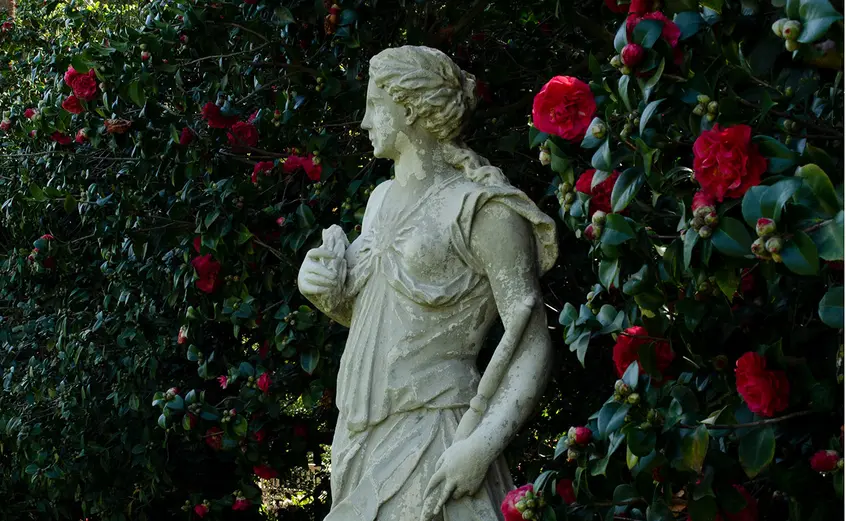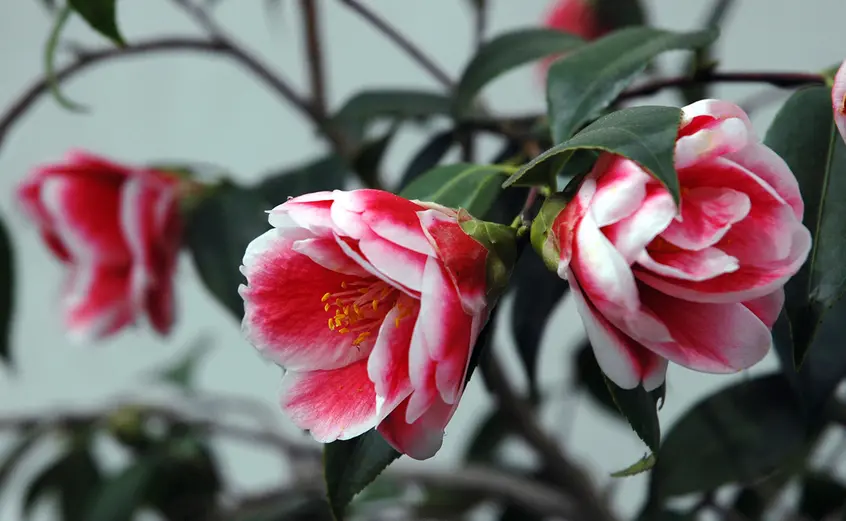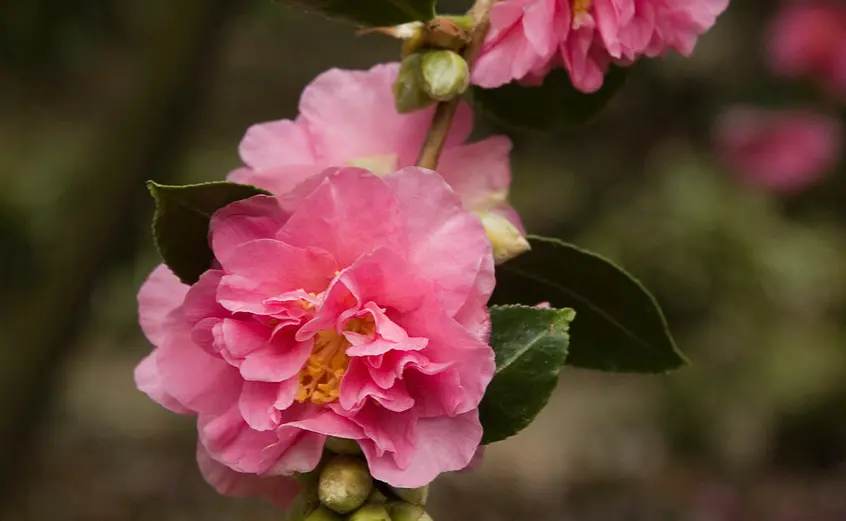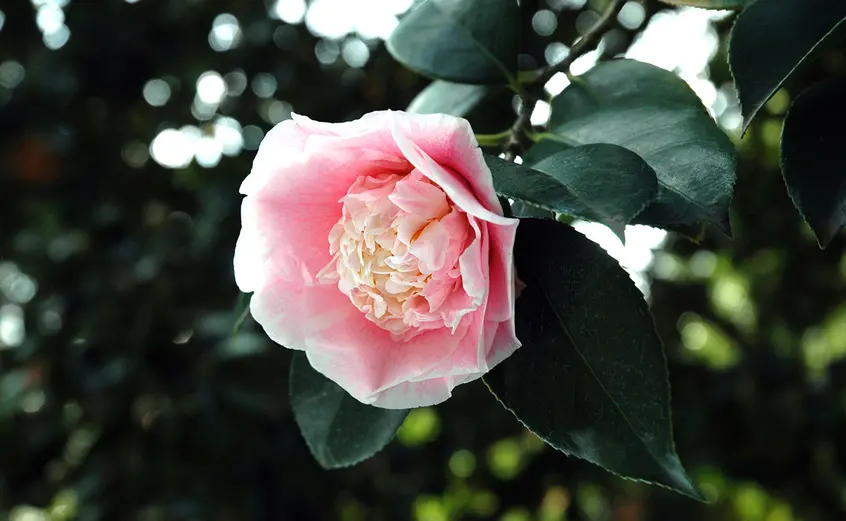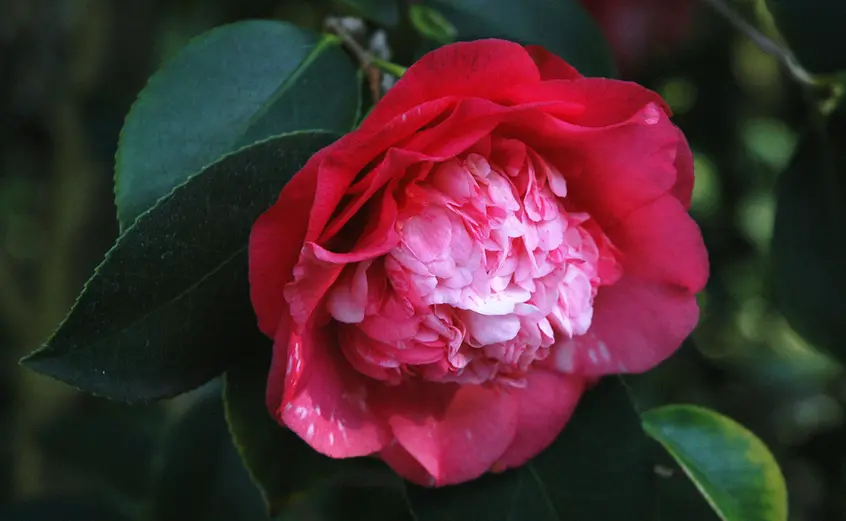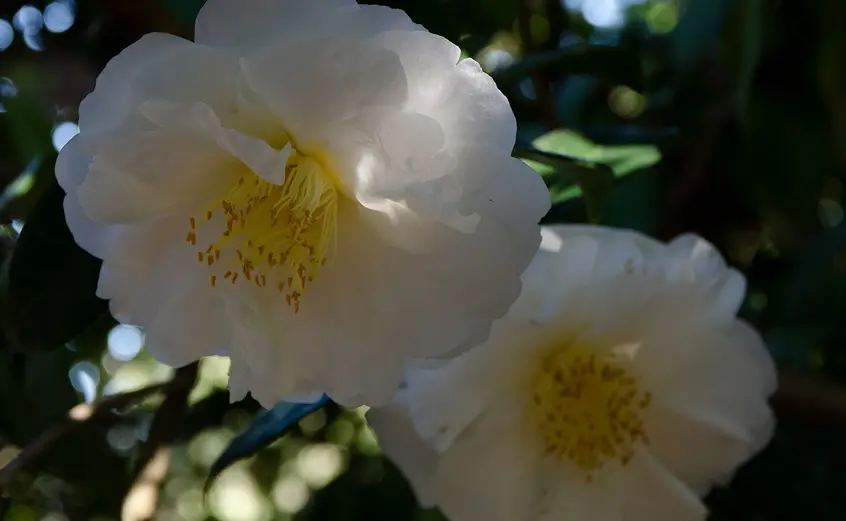
Camellia Garden
“What makes this collection stand out is not only its size and completeness, but also the number of rare and historic cultivars it contains,” says David MacLaren, Curator of Asian Gardens at The Huntington. The International Camellia Society has named The Huntington as an International Camellia Garden of Excellence. The Camellia collection is a Nationally Accredited Plant Collection of the American Public Gardens Association.
Camellias are native to China, Japan, and other parts of east Asia and made their way to the Western world in the 18th century. The descendents of some of the earliest arrivals in England are represented here, including Camellia japonica ‘Alba Plena’ (with white formal double blooms, in several locations in the North Vista and Japanese Garden) and C. reticulata ‘Captain Rawes’ (bearing large semi-double, rose pink flowers; look for it on a stroll path west of the North Vista fountain).
According to MacLaren, the most historic plant in the collection is C. japonica ‘California,’ which is believed to be the oldest camellia on record in Southern California. This specimen arrived on a Japanese tramp steamer as an unnamed seedling in 1888 [purchased from a sailor at Redondo Pier], and had two previous homes before being donated to The Huntington in 2003 by the son of noted camellia collector Ralph Peer. Look for it, with its large rose-red flowers, on the east side of the road between the Library and the North Vista fountain where a new plaque for it and one honoring Ralph Peer were installed in 2021.
The collection’s reputation as one of the most comprehensive in the world is due in large part to the work of one man. William Hertrich was superintendent of the gardens from 1903 to 1948, and camellias were his passion. He started growing camellias from seed in 1912 as rootstock for grafting new cultivars to expand the collection. Many notable new introductions were made over the years, and one of them—C. reticulata ‘William Hertrich’—was named in his honor.
New plantings of reticulata camellias—first introduced into the West from China’s Yunnan Province in 1948—can be seen in and around the Garden of Flowing Fragrance, a tribute to their native roots and to the role of the flower in Chinese culture. Species camellias from China and other Asian countries have been planted in an oak-shaded area behind the North Vista; with atypical characteristics such as fragrant blossoms and low horizontal growth patterns, these species are of great interest to hybridizers, providing pollen and seed for cultivating new and unusual varieties.
And a small “plantation” of tea camellias, C. sinensis, has been planted on a slope alongside the Japanese Garden stream. The tender young leaves of C. sinensis is the source of all black, oolong, and green tea. And what could be more perfect, after a stroll through the camellias on a winter’s day, than to sit for a few minutes in the Hall of the Jade Camellia and enjoy a hot cup of tea?
